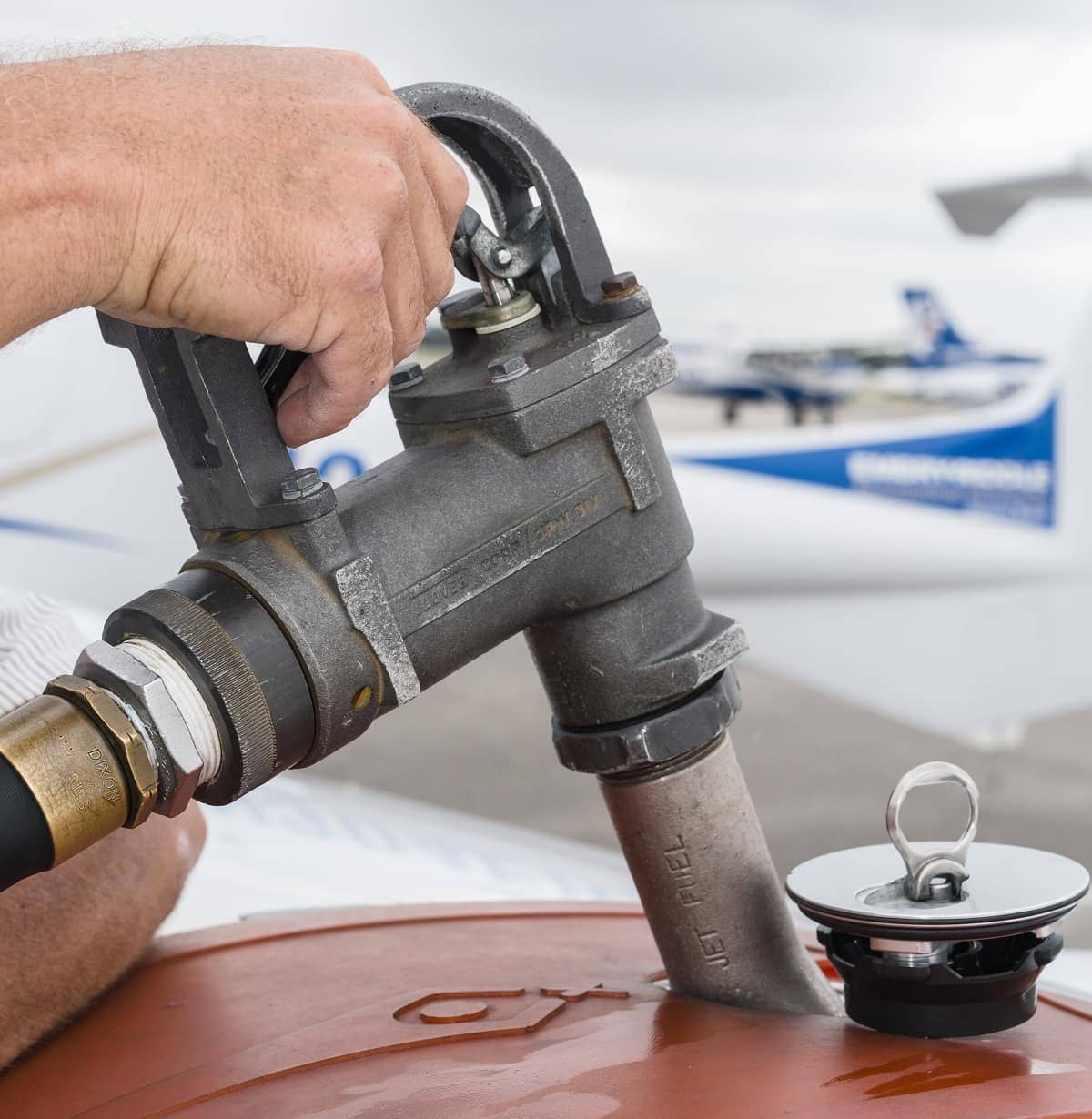G100UL Triumphs: Now The Hard Part
GAMI will have to field its new fuel in a market where 100LL avgas is still the standard. Don’t look for an overnight transition.

(Credit: Embry-Riddle/Daryl LaBello)
I could reach for metaphors involving dogs catching cars or irresistible forces encountering immovable objects, but I’ll just go with a simple fact: After nearly 13 years of trying, GAMI finally has a fleetwide STC for its 100-octane unleaded aviation fuel, G100UL. Mark the historic date as Sept. 1, 2022.
Now comes the hard part.
Gaining the approvals is one thing, but manufacturing and fielding a new fuel in a market not yet sure if it even wants such a thing is something else entirely. There are substantial barriers to overcome and if they’re to be worn down, as FAA resistance eventually was, it will likely be many months more, not just weeks.
First, credit where it’s due. We got here because George Braly and Tim Roehl took the EPA’s rumblings about legislating against tetraethyl lead in 2009 seriously and launched a competent research effort to confront it with an unleaded fuel. Ironically, it may have been a premature bet because by the time the EPA has rules in place, it could be 2026, 17 years after the fact. Maybe longer. By then, unleaded avgas is likely to be significantly fielded.
During the decade-plus it took to do this, Braly and Roehl plugged along with purposeful, creative research animated by a unique capability: It was engine-cell centric. Think of this as the fuels equivalent of rapid prototyping. The oil majors lacked this capability and the FAA’s technical support in this realm was mediocre at best. As I pointed out in my video series on leaded avgas, the majors were blasé about research, partly because there was no prohibition against lead, they were making money on 100LL and everyone knew that the FAA’s insistence that an unleaded fuel behave exactly like a leaded fuel was a non-starter. Inertia is its own reward.
Agency sabotaging of GAMI’s efforts was largely a headquarters and division thing, especially the Engine and Propeller Directorate, which deserves special demerits. According to GAMI, staff work at the Aircraft Certification Office level, especially in Wichita, was efficient and professional. From the outside looking in, the test program looks reasonable within the constraints of time and budget. We might have all liked a long-term fleet trial, but that’s going to happen in the real world.
The politics of this effort defy description. Industry players such as Lycoming and Continental were either disinterested or oppositional to the GAMI STC. Cessna was, at best, non-committal, although Cirrus participated in testing and maintained a supportive stance. The alphabets have never been enthusiastic, but against a tide of general resistance, AOPA’s Mark Baker recently worked in the background in support of the STC. And still, there’s a rearguard. GAMA’s press release on the GAMI STC reads like it was dictated through gritted teeth, making progress feel like it’s pulling same.
I suspect elements in the FAA will continue to oppose this STC for manufactured reasons. At the last minute, there was an FAA attempt to impose onerous test and monitoring requirements on the fielding of G100UL, since dropped. I can’t imagine the internal FAA politics here and I’m eternally grateful I don’t work there. But Lirio Liu, the new head of FAA certification, certainly knows the terrain and scythed through it in short order. After a final cert meeting in Oklahoma in August, she promised action in two weeks.
She delivered.
Now Avfuel has to do the same. GAMI has contracted with the company to manufacture and distribute G100UL. Avfuel has done this sort of thing before, but the territory and economics here are incognita. G100UL is a blended fuel consisting of a high-octane alkylate base, plus a proprietary additive package. This can be done in a refinery, but is more likely to be splash blended in facilities capable of bringing the refined components together via barge or rail to complete a finished fuel.
Like everything else in the current economy, rail cars are hard to come by, wharfs for barges are in short supply and transportation is widely more expensive. Avfuel will have to find facilities capable of pulling this together and cut the sort of deals oil companies have done with each other since the days of Standard Oil. It would help if a major got interested in a licensing deal with GAMI and I suspect this will happen sooner than later. Watch for an announcement.
And even at that, G100UL will be selling into a market where 100LL will be cheaper by an unknown amount probably around 50 to 80 cents. Suppliers and FBOs will have to be either convinced of its benefits or within earshot of the proverbial voice of the customer expressing demand. This is not going to be an overnight transition. Avfuel has been saying as much.
One other bit of good news here relates to a GAMI competitor, Swift. The University of North Dakota recently announced that it will transition entirely to Swift’s UL94; it has no need for 100-octane fuel. This will provide a perfect laboratory to show if the true benefit of unleaded fuel—lower maintenance costs and longer-lasting engines—is real or just marketing babble. UND uses 700,000 gallons of fuel a year and keeps good records. This time next year, we should have our answer. GAMI has a launch customer in the California Aeronautical University at Bakersfield. It’s a smaller fleet, but should yield useful confirming test data.
That’s important, because there is some risk here and no one should pretend there isn’t. GAMI’s test program was as thorough and competent as time and money allowed, but there can always be surprises and if they’re lurking, long-term fleet use will reveal them. This is the benefit of a slow rollout. Sometimes even the blind GA squirrel finds a nut.
Then there’s California at large. And Chevron. Local jurisdictions in California have been making noise about prohibiting lead in fuels for environmental health reasons that the data simply does not support. If that happens or the entire state outlaws lead precipitously, we have a two-pronged problem. Avfuel et al. might not be able to ramp up production fast enough to meet the demand, so the lead deadline matters. Further, Chevron’s Richmond refinery supplies the entire West Coast, including Canada and Mexico, with 100LL. If California decides to ban TEL, will Chevron have the stomach to challenge it or just license refine G100UL or another unleaded fuel? Or simply exit the business? No one has the answer to this because no one knows either a potential timeline or what Chevron’s interests are.
And last, EAGLE, which is looking more like a turkey at the moment. This is, of course, the FAA’s multi-year program to find and certify an unleaded fuel. In my view, it was a dead letter from the start or, to be fair, the testing component of it is. That's just PAFI again. But that’s not to say the FAA shouldn’t have a role in encouraging competitive fuel development. But EAGLE has too many players, has overcomplicated the task and assigned testing to the FAA. In my view, this is exactly backward. The industry won’t admit it, but this is the functional equivalent of Boeing or Airbus submitting airplane designs to the FAA for testing, approval and selection.
It doesn’t work that way. The airplane companies do their own testing, supervised and approved by the FAA. Fuels should work the same way. If a BP, a Shell or a Phillips proposes a new fuel, they should also propose a test program that’s a roadmap to approval. The Wichita ACO knows how to do this, as should be obvious. They can’t cut and paste GAMI’s proprietary test protocol, but they’ve got recent experience on overseeing fuel certification. They know what questions to ask of an applicant. It makes no sense for FAA HQ to reinvent this, only with input from dozens of players in a cumbersome, expensive program that seems as likely to fail as the ill-starred PAFI did. It’s in the industry’s interest to have competitors to G100UL if any companies want to step up. But they should do it with their own money, as GAMI and Swift have done. We’ll see if any go there. The first step toward success would be realizing this shouldn't be as hard as EAGLE makes it look.
In the meantime, when and where can you buy G100UL for your airplane? The best answer is somewhere, eventually. And that’s just a hell of a lot better than it was three days ago.






